by Zoe Apr 09,2025
A monitor is the ultimate gaming accessory, crucial for maximizing the stunning graphics and rapid refresh rates your gaming PC can deliver. Why invest in a high-end graphics card and CPU if your display can't showcase their full potential? That's why we've handpicked the best gaming monitors, ensuring crisp visuals and smooth motion to enjoy your favorite PC games as they were meant to be experienced.
 Our Top Pick### Gigabyte FO32U2 Pro
Our Top Pick### Gigabyte FO32U2 Pro
6See it at AmazonSee it at Newegg ### AOC Q27G3XMN Mini-LED Gaming Monitor
### AOC Q27G3XMN Mini-LED Gaming Monitor
2See it at Amazon ### Acer Predator X34 OLED
### Acer Predator X34 OLED
0See it at AmazonSee it at B&H  ### Dell Alienware AW2725Q
### Dell Alienware AW2725Q
1See it at Dell ### Asus ROG Swift PG27AQDP
### Asus ROG Swift PG27AQDP
0See it at Newegg ### Asus TUF Gaming VG279QM
### Asus TUF Gaming VG279QM
1See it at AmazonYour gaming monitor should align with your PC's capabilities; there's no benefit in choosing a top-tier 4K monitor if your games struggle with a GeForce RTX 4060 at that resolution. Similarly, pairing a powerful Radeon RX 7900 XTX with a 1080p display underutilizes its potential. The best gaming monitors complement your system's strengths, offering excellent picture quality, swift response times, and a suite of gaming features. High refresh rates ensure fluid gameplay, and those extra milliseconds can be crucial in competitive scenarios.
Whether you're looking for a future-proof option with a crisp 4K display, an OLED panel, and a blazing 240Hz refresh rate—like our top pick, the Gigabyte FO32U2 Pro—or seeking a more budget-friendly option, we've got you covered. All our recommended gaming monitors have been rigorously tested and are designed to meet various gaming needs.
Looking for savings? Be sure to check out the best gaming monitor deals happening right now.
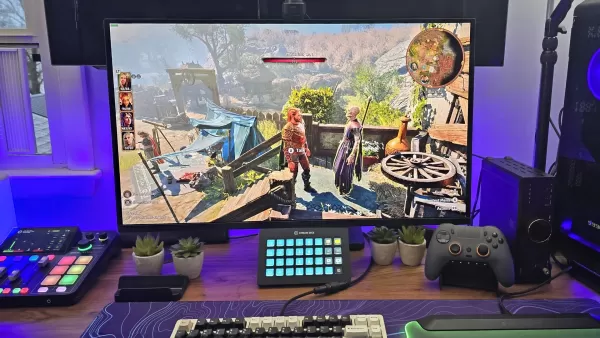
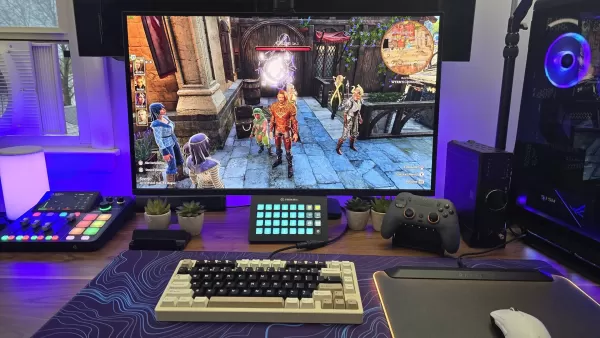 13 Images
13 Images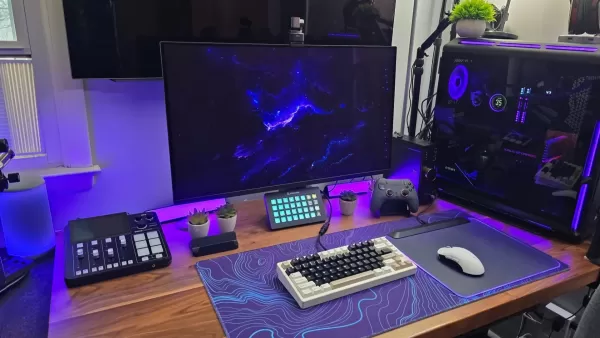


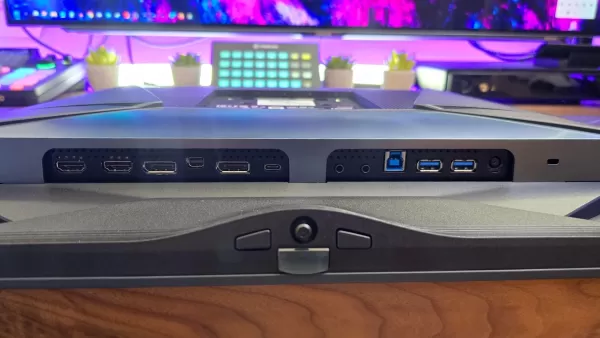 1. Gigabyte FO32U2 Pro
1. Gigabyte FO32U2 Pro Our Top Pick### Gigabyte FO32U2 Pro
Our Top Pick### Gigabyte FO32U2 Pro
6This stunning monitor excels across the board with its comprehensive features and OLED panelSee it at AmazonSee it at NeweggProduct SpecificationsScreen size31.5"Aspect ratio16:9Resolution3840x2160Panel typeOLEDHDR compatibilityHDR TrueBlack 400Brightness1,000 nitsRefresh rate240HzResponse time0.03msInputs2 x HDMI 2.1, 1 x DisplayPort 1.4PROSOutstanding picture qualityExtremely thin panelCONSExpensiveThe Gigabyte FO32U2 Pro is the epitome of OLED excellence in gaming monitors, showcasing a 32-inch 4K display with an impressively slim profile. Though it comes with a higher price tag, the investment is justified by its top-tier performance. This monitor is ahead of the curve, supporting a 240Hz refresh rate that prepares it for future graphics card advancements. Its OLED panel delivers exceptional color accuracy, covering up to 99% of the DCI-P3 color gamut, with a peak brightness of 1,000 nits and a contrast ratio of 1.5M:1, enhancing the visual experience across games, movies, and desktop use.
Additional features like picture-in-picture and an automatic black equalizer enhance the user experience, while the Gigabyte Control Center allows for detailed image adjustments. This monitor truly represents the pinnacle of gaming monitor technology in 2024.
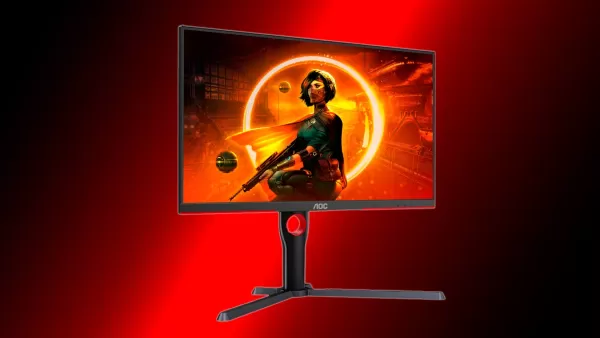 2. AOC Q27G3XMN Mini-LED
2. AOC Q27G3XMN Mini-LED ### AOC Q27G3XMN Mini-LED Gaming Monitor
### AOC Q27G3XMN Mini-LED Gaming Monitor
0QHD, 1440p, a high refresh rate, and a mini-LED backlight for true HDR?! Grab this monitor at its current low price!See it at AmazonProduct SpecificationsScreen size27"Aspect ratio16:9Resolution2560x1440Panel typeVAHDR compatibilityHDR1000Brightness1,000 nitsRefresh rate180HzResponse time1ms (GTG)Inputs1 x DisplayPort 1.4, 2 x HDMI 2.0, 1 x 3.5mm AudioPROSMini-LED backlight technologyHigh refresh rate for improved responsiveness and decreased motion blurPeak brightness of 1,000 nits for true HDRCONSNo USB connectivityLimited local dimming zonesThe AOC Q27G3XMN offers true HDR gaming at a budget-friendly price, thanks to its mini-LED backlight that achieves localized brightness and contrast up to 1,000 nits. This ensures a full HDR experience, far superior to the typical "HDR 400" found in many other monitors.
With a VA panel for enhanced contrast and 336 local dimming zones, this monitor delivers vivid colors and deep blacks, making it an excellent choice even without the mini-LED feature. The 27-inch 1440p display offers crisp visuals and smooth gameplay, though it lacks amenities like built-in speakers or a USB hub. While it may exhibit some blooming due to fewer local dimming zones compared to premium models, it remains a strong contender for budget-conscious gamers seeking impressive visuals.
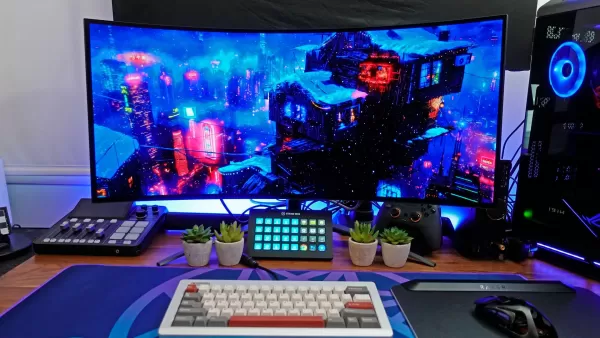 3. Acer Predator X34 OLED
3. Acer Predator X34 OLED ### Acer Predator X34 OLED
### Acer Predator X34 OLED
0With its expansive 34-inch 21:9 display, Acer's Predator X34 OLED meets every expectation for a flagship gaming monitor. See it at AmazonSee it at B&H Product SpecificationsScreen size34Aspect ratio21:9Resolution3440x1440Panel typeOLEDHDR compatibilityVESA DisplayHDR True Black 400Brightness1,300 cd/m2 (peak)Refresh rate240HzResponse time0.03msInputs2 x HDMI 2.1, 1 x DisplayPort 1.4, 2 x USB 3.2 Gen 2 Type-CPROSDeep blacks and bright highlightsRich, engaging colorsExcellent refresh rate and response timeOffers an immersive gaming experience CONSDeep curvature isn't for everyoneOnly reference preset is DCI-P3, not sRGBThe Acer Predator X34 OLED stands out as the top ultrawide gaming monitor in 2025. Its 34-inch 21:9 display, combined with a deeply curved 800R OLED panel, provides an immersive gaming experience. While the curvature might not suit everyone, especially for productivity, it excels in gaming.
The monitor's 0.03ms response time and 240Hz refresh rate ensure minimal input latency, ideal for competitive gaming. Its peak brightness of 1,300 nits delivers lifelike highlights and infinite blacks, typical of OLED's superior contrast. The only notable drawback is the absence of an sRGB mode for content creators, though it does offer a DCI-P3 mode.
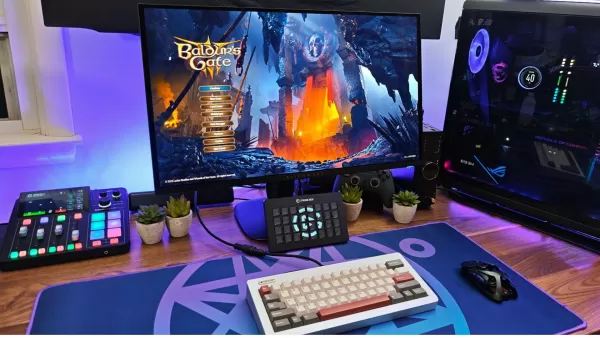
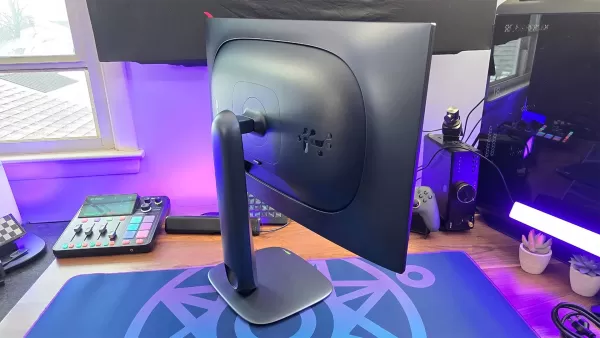 15 Images
15 Images
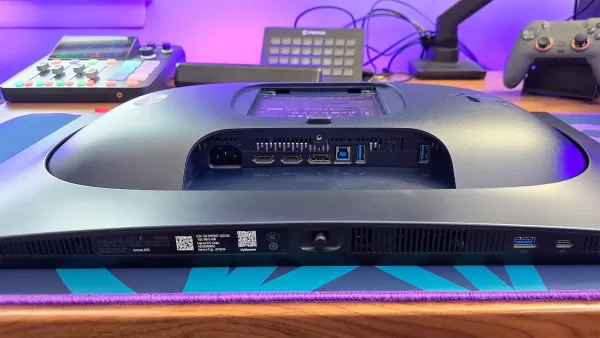

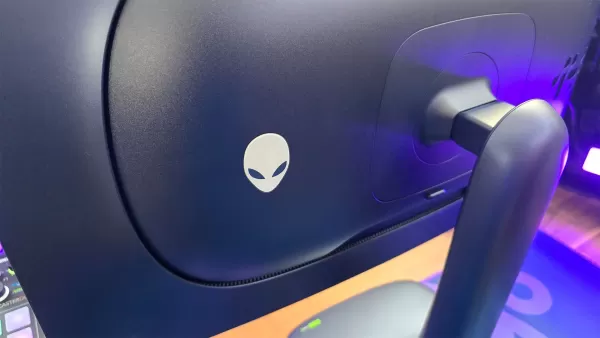 4. Dell Alienware AW2725Q
4. Dell Alienware AW2725Q ### Dell Alienware AW2725Q
### Dell Alienware AW2725Q
1Dell's Alienware AW2725Q offers excellent value among high-end gaming monitors. Its support for Dolby Vision and console-friendly design make it ideal for gamers switching between platforms.See it at DellProduct SpecificationsScreen size26.7"Aspect ratio16:9Resolution3840x2160Panel typeQD-OLEDHDR compatibilityVESA DisplayHDR True Black 400Brightness1,000 nitsRefresh rate240HzResponse time0.03msInputs2 x HDMI 2.1, 1 x DisplayPort 1.4, 3 x USB 3.2 Gen 1 Type-A, 1 x USB 3.2 Gen 1 Type-CPROSGorgeous picture with high PPI for improved clarityImpressive color accuracy right out of the boxGood value for what it offersCONSLow SDR brightnessLacks DisplayPort 2.1The Dell Alienware AW2725Q is a premier choice for stunning 4K visuals and performance. Featuring an updated QD-OLED panel and a 240Hz refresh rate, it offers a refined design and enhanced gaming experience. Its 27-inch size provides a high pixel density of 166PPI, ensuring clear and detailed images.
The monitor's OLED panel delivers outstanding colors and supports VESA DisplayHDR True Black 400 and Dolby Vision HDR for superior image quality. Although its SDR brightness is limited, HDR performance reaches 1,000 nits for bright highlights. The 0.03ms response time paired with its high refresh rate makes it ideal for competitive gaming. Note, it only supports DisplayPort 1.4, requiring Display Stream Compression for full resolution and refresh rate.

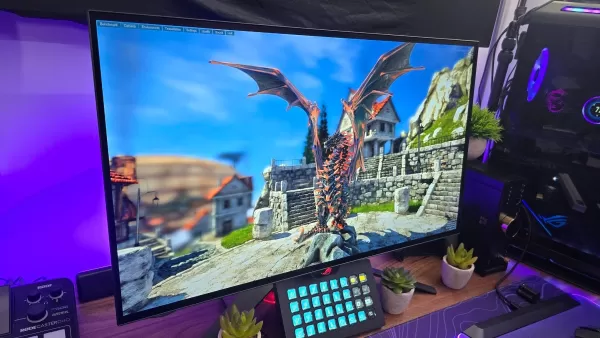 19 Images
19 Images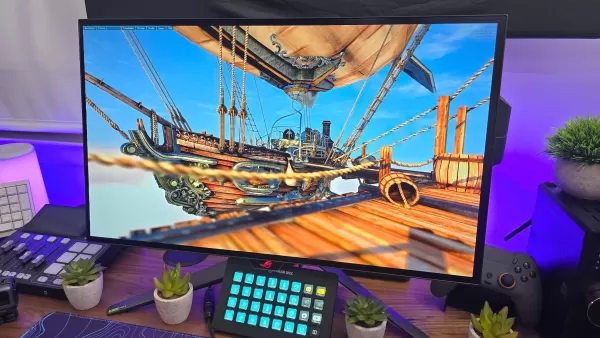
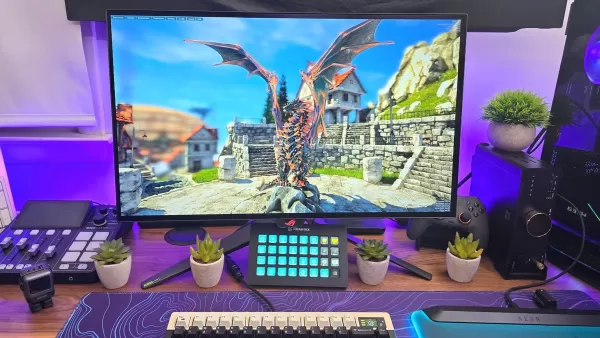

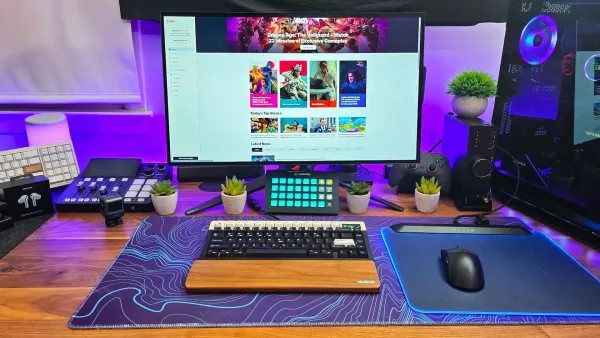 5. Asus ROG Swift PG27AQDP
5. Asus ROG Swift PG27AQDP ### Asus ROG Swift PG27AQDP
### Asus ROG Swift PG27AQDP
0The Asus ROG Swift PG27AQDP is a top-tier gaming monitor that meets all competitive gaming needs.See it at NeweggProduct SpecificationsScreen size26.5Aspect ratio16:9Resolution2560 x 1440Panel typeOLED FreeSync Premium, G-Sync CompatibleHDRVESA DisplayHDR True Black Brightness1,300 cd/m2 (peak)Refresh rate480HzResponse time 0.03msInputs2 x HDMI 2.1, 1 x DisplayPort 1.4, 2 x USB 3.2 Gen 2 Type-A, HeadphonesPROSPerfectly sized for 1440pCan get exceptionally bright and infinitely dark for great HDRNative 480Hz refresh rateOut of the box color accuracyCONSFew games, outside of esports, will ever hit 480HzThe Asus ROG Swift PG27AQDP is the ultimate choice for 1440p gaming, especially for esports. Priced competitively, it offers exceptional HDR performance and color accuracy. Its 480Hz refresh rate is among the fastest available, delivering unparalleled motion clarity. The WOLED panel's rich colors and infinite contrast make it perfect for gaming, movies, and content viewing.
The monitor's fast response time eliminates motion blur, enhancing performance in fast-paced games. It also features robust OLED protection mechanisms, including pixel shifting and dynamic dimming to prevent burn-in. Despite lacking a KVM or USB video input, its comprehensive features make it an outstanding choice for gamers.
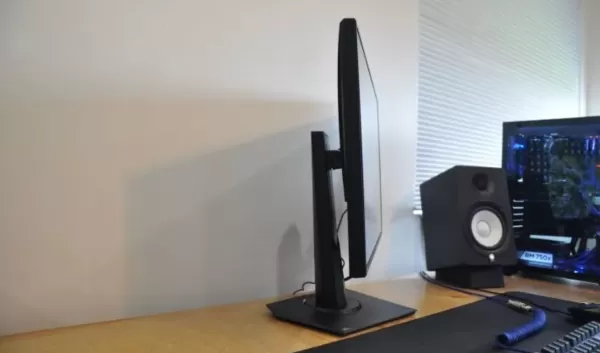
 ### Asus TUF Gaming VG279QM
### Asus TUF Gaming VG279QM
1A 27-inch Full HD display with an overclockable 240Hz refresh rate, low input lag, and adaptive sync for smooth gameplay.See it at AmazonProduct SpecificationsScreen size27"Aspect ratio16:9Resolution1,920 x 1,080Panel typeIPS FreeSync, G-Sync compatibleBrightness400cd/m2Refresh rate240Hz, 280Hz (OC)Response time1ms (GtG)Inputs2 x HDMI 2.0, 1 x DisplayPort 1.2PROSBudget priceExcellent motion handlingCONSSome pixel peepingWhile 4K and 1440p monitors are popular, 1080p monitors like the Asus TUF Gaming VG279QM have their place. At under $300, it offers a 240Hz refresh rate (overclockable to 280Hz), a 1ms response time, and low input lag for smooth gameplay. Its FreeSync and G-Sync compatibility ensure tear-free visuals.
The 27-inch screen size is well-suited for 1080p, though some pixel peeping may occur. The IPS panel provides good viewing angles and color reproduction, with a 400-nit brightness suitable for various lighting conditions. Despite its DisplayHDR 400 certification, HDR performance is modest. Additional features include a height-adjustable stand and ample connectivity options, making it a great value for budget-conscious gamers.
AnswerSee Results How to Choose a Gaming MonitorWhen selecting a gaming monitor, consider four key factors: screen size, resolution, panel type, and aspect ratio. We'll also touch on technical aspects like refresh rate and variable refresh rate technology to help you make an informed decision.
Screen size: The first question is, "How big?" Your choice depends on your setup. Are you in a small space or looking for a monitor that can double as a TV? Use a measuring tape to assess your space. As a guideline, 1080p works well up to 27 inches, 1440p suits 27 to 32 inches, and 4K is ideal for 32 inches at a typical desk distance. Larger screens, like 43 inches, are suitable if you sit farther back.
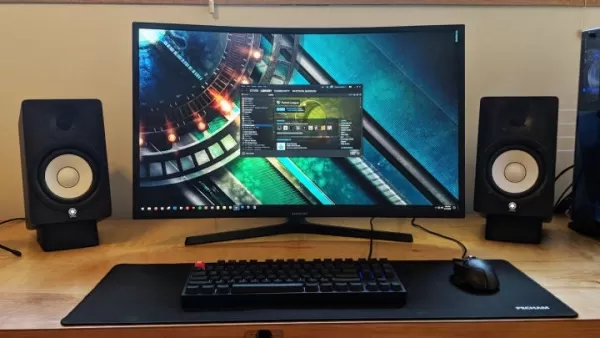 Aspect ratio: This determines the shape of your display. Most monitors use a 16:9 aspect ratio, while ultrawide monitors often use 21:9. Even wider 32:9 displays are becoming popular.
Aspect ratio: This determines the shape of your display. Most monitors use a 16:9 aspect ratio, while ultrawide monitors often use 21:9. Even wider 32:9 displays are becoming popular.
Screen resolution: This affects the sharpness of your display. Options include Full HD (1920x1080), Quad HD (2560x1440), and Ultra HD or 4K (3840x2160). Higher resolutions demand more from your graphics card.
Panel type: Different panels offer unique benefits. Avoid TN panels due to their outdated technology. IPS panels are known for color accuracy and wide viewing angles, with response times around 3-5ms. "Fast IPS" panels can achieve 1ms. VA panels offer good image quality and contrast but may exhibit ghosting. Mini-LED backlighting enhances brightness and local dimming but can cause blooming. OLED panels deliver the best contrast and HDR experience, though they require care to prevent burn-in.
 Response time: Competitive games require monitors with 1ms response times. Most single-player games can handle 3-5ms, while the fastest OLED panels offer 0.03ms. Pairing this with a high refresh rate (144Hz or higher) minimizes input latency.
Response time: Competitive games require monitors with 1ms response times. Most single-player games can handle 3-5ms, while the fastest OLED panels offer 0.03ms. Pairing this with a high refresh rate (144Hz or higher) minimizes input latency.
Refresh rate: This indicates how often your screen refreshes, affecting gameplay smoothness. Standard is 60Hz, but higher rates like 120Hz, 144Hz, 240Hz, 360Hz, and up to 500Hz enhance visual fluidity and reaction times in competitive gaming.
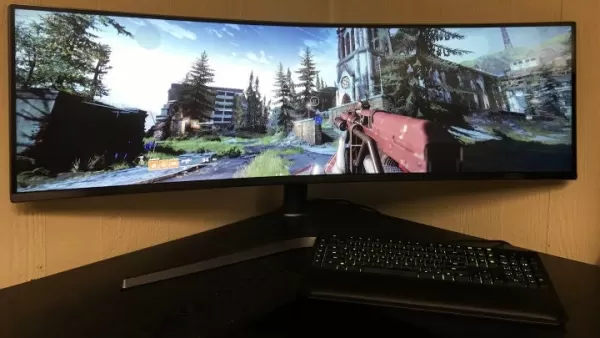 G-Sync vs FreeSync: Variable refresh rate technology ensures smooth gameplay by syncing your monitor's refresh rate with your GPU's frame rate, preventing screen tearing. Nvidia's G-Sync and AMD's FreeSync require compatible graphics cards. G-Sync offers tiers like G-Sync Compatible, G-Sync, and G-Sync Ultimate, while FreeSync has FreeSync, FreeSync Premium, and FreeSync Premium Pro.
G-Sync vs FreeSync: Variable refresh rate technology ensures smooth gameplay by syncing your monitor's refresh rate with your GPU's frame rate, preventing screen tearing. Nvidia's G-Sync and AMD's FreeSync require compatible graphics cards. G-Sync offers tiers like G-Sync Compatible, G-Sync, and G-Sync Ultimate, while FreeSync has FreeSync, FreeSync Premium, and FreeSync Premium Pro.
Ensure your graphics card can handle the monitor's resolution and refresh rate to avoid wasted investment.
Choosing between a gaming monitor and a gaming TV depends on your gaming preferences and setup. Gaming TVs offer large screens with excellent brightness, contrast, and color due to OLED or mini-LED technology, often at a lower cost than comparable monitors.
For gaming performance, monitors generally excel with low input lag, high refresh rates, and fast pixel response times. Most monitors boast refresh rates of 120Hz or higher, with some reaching 360Hz or 500Hz, and often include variable refresh rate technology. TVs, even at 4K, typically top out at 60Hz or 120Hz.
Monitors provide better value, with budget-friendly options offering high refresh rates and adaptive sync. TVs at similar price points often lack gaming features. Additionally, gaming TVs may not have standby modes, increasing burn-in risk for productivity use.
Size is a key differentiator. Monitors over 43 inches are rare, while TVs offer larger screens ideal for couch gaming. For desk use, larger screens require more viewing distance to avoid head-turning. Consider adjustable stands or mounts for optimal positioning.
AMD FreeSync and Nvidia G-Sync use VRR technology to sync your display's refresh rate with your gaming device's frame rate. Both follow the VESA Adaptive-Sync standard, and most FreeSync displays work with G-Sync-compatible GPUs, though not officially certified.
Nvidia's tiers include G-Sync Compatible, G-Sync, and G-Sync Ultimate, each offering varying levels of adaptive sync and performance. AMD's tiers are FreeSync, FreeSync Premium, and FreeSync Premium Pro, adding features like low framerate compensation and HDR support.
The best resolution depends on your gaming needs and hardware. 1080p is ideal for high refresh rates and budget setups. 4K offers the sharpest visuals but requires powerful hardware and can be costly. 1440p strikes a balance, providing clear visuals and high frame rates with mid-range or better GPUs.
HDR enhances color vibrancy, brightness, and contrast, improving game visuals. True HDR requires at least 1000 nits of peak brightness, though displays above 600 nits can still offer benefits. OLED and Mini-LED panels deliver the best HDR experience, while many monitors claiming HDR support may only be HDR compatible.
Gaming monitors can be expensive, so consider shopping during major sales events like Amazon Prime Day, Black Friday, or Cyber Monday. Also, watch for deals when manufacturers release new models, as older ones often go on sale.
Forsaken Characters Ranked: Tier List Update 2025
How to Use Cheats in Balatro (Debug Menu Guide)
State of Play Reveals Exciting Updates: PlayStation February 2025 Showcase
Infinity Nikki – All Working Redeem Codes January 2025
Roblox: Obtain Secret Codes for January 2025 (Updated)
Pokémon GO Raids in January 2025
Wuthering Waves: Redeem Codes for January 2025 Released!
LEGO Ninjago Sets Top the Charts (2025)

Everlasting Alchemists
Download
Word Pizza - Word Games
Download
Car Crash: 3D Mega Demolition
Download
Dinosaur games - Dino land
Download
Die Again
Download
Bus Simulator 3D - Bus Games
Download
Michael Myers Halloween Trivia
Download
Woozworld - Virtual World
Download
Blackjack Legends: 21 Online Multiplayer Casino
Download